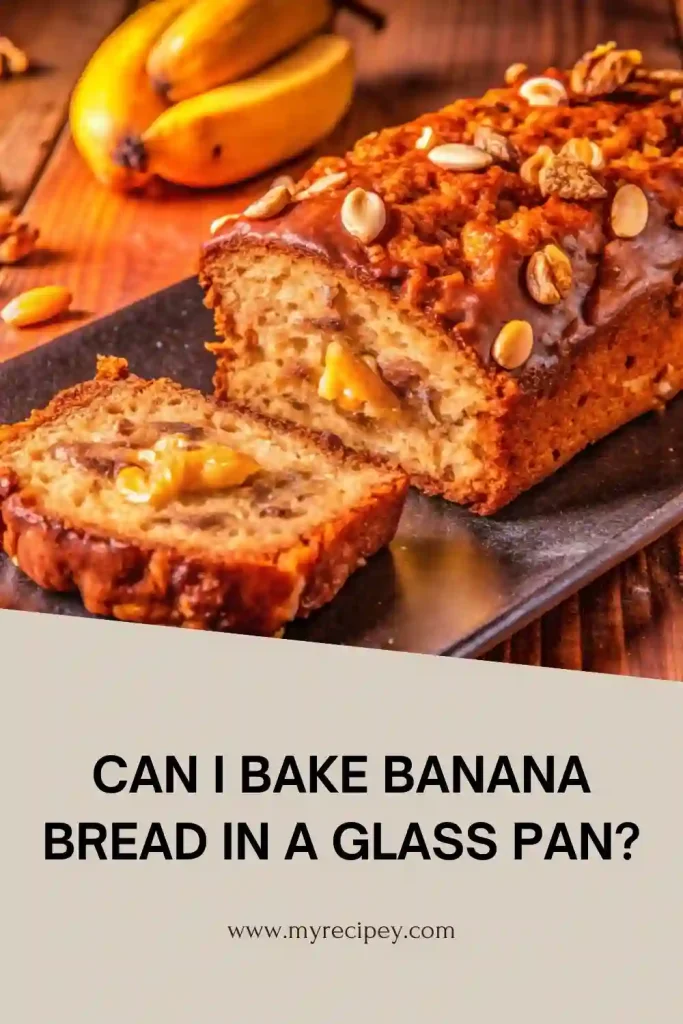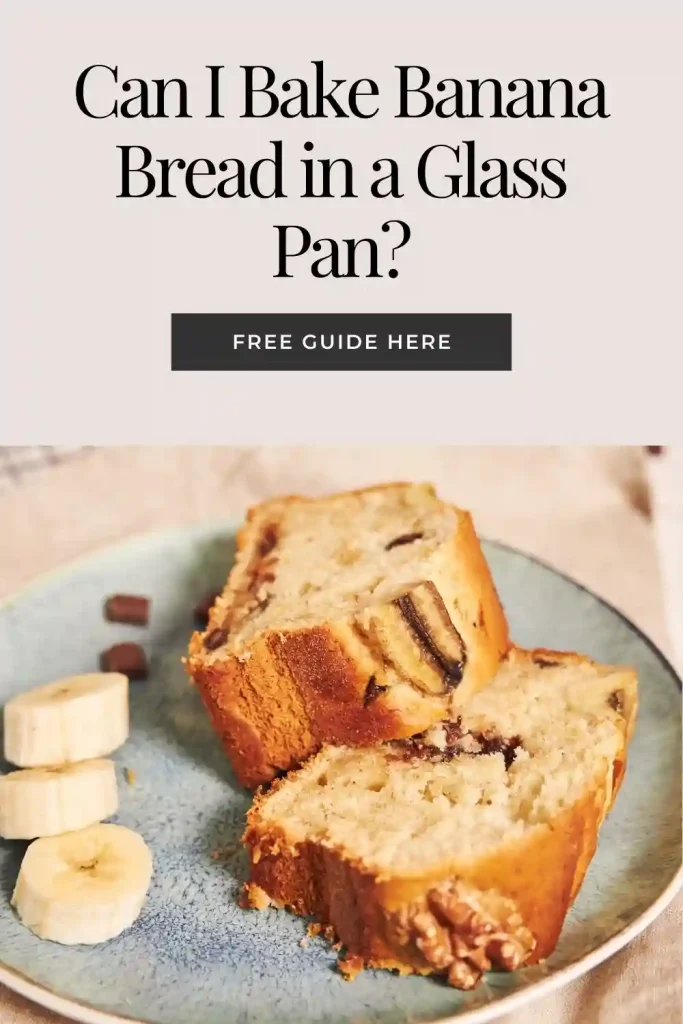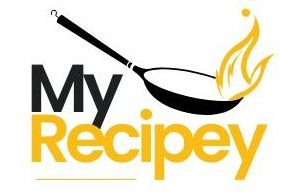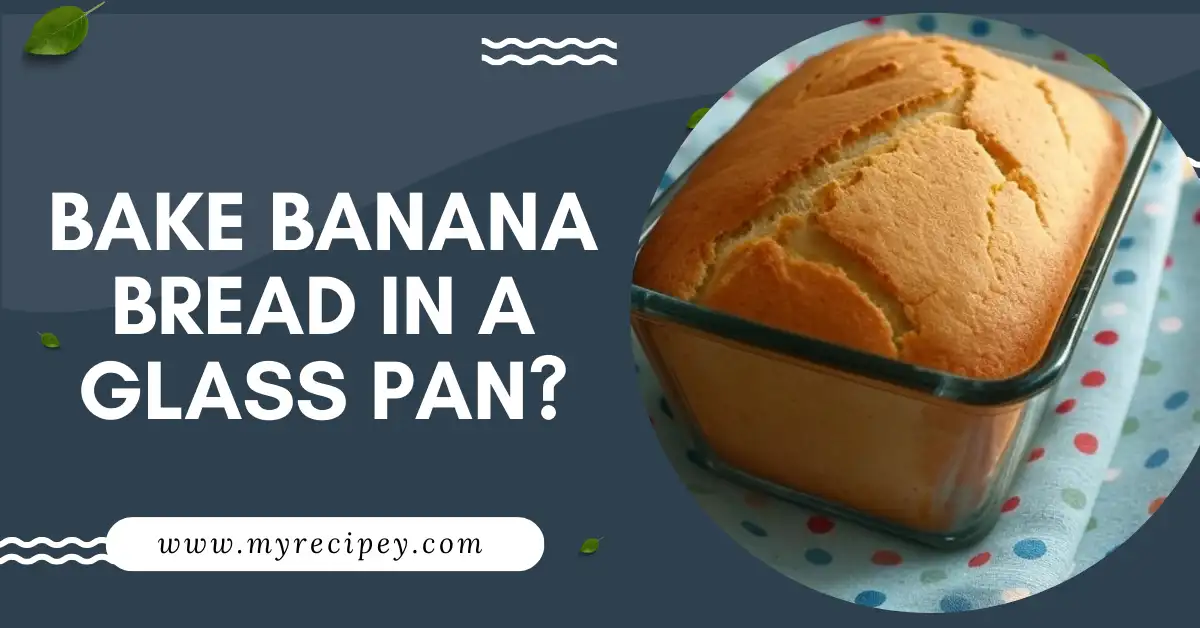Last weekend, I found myself mid-recipe, bananas mashed and all, only to realize my metal loaf pan had mysteriously vanished. I paused and thought, can I bake banana bread in a glass pan? If you’ve ever faced the same moment of kitchen panic, you’re not alone. Over the years, I’ve baked more banana bread than I can count, and trying it in a glass loaf pan was an unexpected twist that taught me a lot about texture, timing, and taste. In this post, I’ll share what happened, how it turned out, and what you should know if you’re about to do the same. Stick around—this might just change how you bake banana bread forever!
Table of Contents
Can You Make Banana Bread in a Glass Loaf Pan?
Yes, you can make banana bread in a glass loaf pan—and I’ve done it myself. Honestly, I was a little nervous at first. Glass just feels more delicate than metal, right? But when I poured the batter into that clear pan and slid it into the oven, I realized this simple swap could teach me more than I expected. If you’re wondering, “Can you make banana bread in a glass loaf pan?” the short answer is absolutely—but there are a few things to keep in mind.
The first thing I noticed was that the glass pan took longer to heat up. That meant the bread needed a bit more time in the oven than usual. So if you’re used to pulling it out at 55 minutes, don’t be surprised if it needs closer to 65 in glass. This slower heating isn’t a flaw—it’s actually one of the reasons banana bread bakes more evenly in a glass pan. The center cooks through gently without drying out the edges too fast.
One unexpected perk? The crust. It turned out softer and a little less crisp than what I get from my metal pan. Some people love that golden crunch on the outside—if that’s you, metal might still be your best bet. But if you prefer a tender bite all around, baking in glass might be your new favorite trick.
In short, yes—you can bake banana bread in a glass pan, and it can turn out beautifully. You just need to adjust your expectations a bit. A little more time, a little less crust, but a whole lot of flavor.

Key Differences Between Glass and Metal Pans
So, can you bake in a glass pan? Absolutely—but it’s a slightly different experience from using metal. I didn’t realize how much the pan material mattered until I saw my banana bread bake slower, but more evenly, in glass. It made me pause and appreciate the way heat works in baking.
Glass pans heat up more slowly than metal ones, but once they’re hot, they hold onto that heat longer, which means your bread bakes more gently and consistently. In contrast, metal pans heat up quickly and transfer that heat fast, which can cause the edges to cook and brown faster than the center—especially with thick batters like banana bread.
That slower, steadier heat in glass can be a real benefit. I noticed my loaf came out more evenly cooked from edge to center, with no soggy middle. The trade-off? It took a bit longer in the oven. But that extra time helped avoid dried-out crusts and undercooked centers—something metal sometimes struggles with.
If you’re switching to glass, just remember to lower your oven temperature by 25°F from what the recipe says. So if it calls for 350°F, go with 325°F. This adjustment helps prevent the outside from baking too quickly before the inside is ready.
Texture-wise, glass and metal also produce different results. Metal pans give the bread a crisper, more browned crust—great if you love that firmer bite. But if you’re after a softer, more tender crust, glass gives your banana bread that cozy, melt-in-your-mouth edge.
In short, yes, you can bake in a glass pan, and once you understand how it handles heat, you might even like it better. It all depends on the kind of banana bread experience you’re going for—crispy and bold, or soft and soothing.
Baking Tips for Banana Bread in a Glass Pan
If you’re baking banana bread in a glass pan, the key is to go slow and steady—like coaxing flavor from a slow-simmered stew. The pan behaves a little differently than metal, but with the right steps, your loaf can come out moist, golden, and delicious every single time.
Adjust the Temperature and Time
Short answer? Lower the oven temperature by 25°F and expect a longer bake. If your recipe says 350°F, go with 325°F instead. Glass takes longer to heat up, but once it’s hot, it holds onto that heat—kind of like how a thick mug keeps your coffee warm longer.
In my experience, banana bread that usually takes 55 minutes in a metal pan needed about 65 to 70 minutes in my glass one. The slower bake actually made the crumb softer and more even. Just be patient—don’t crank up the heat or you’ll risk burning the edges before the center sets.
Grease It Well—Like, Really Well
Here’s a mistake I made the first time: I only greased the bottom, and the sides clung on like the bread didn’t want to let go. Always grease and flour the entire inside of the glass pan, especially the corners.
You can also line it with parchment paper if you want an easier release. But if you’re keeping it classic, a good rub of butter or neutral oil followed by a dusting of flour works wonders. Glass pans tend to stick more than metal, so a little extra prep here saves the day later.
How to Know When It’s Done
The best test? A toothpick in the center should come out clean or with just a few crumbs. If it’s still wet, it’s not ready. For more precision, I like to use a food thermometer—look for an internal temp of around 200°F to 205°F. That’s the sweet spot for fully baked banana bread.
I also check the top. If it’s golden and starting to crack a little, that’s usually a good sign it’s baked through. But remember—glass makes the outside brown slower, so don’t wait for a deep crust to tell you it’s done.
Let It Cool… Completely
This might be the hardest part—waiting. But don’t rush to flip the bread out. Let it sit in the glass pan for at least 10 to 15 minutes after baking. I’ve learned (the hard way) that pulling it out too soon can lead to tearing or breaking.
Glass cools slowly, so the bread keeps cooking slightly even after you take it out of the oven. Letting it rest also helps the structure set, so you get nice, clean slices instead of a crumbled mess.
What Is the Best Container for Banana Bread?
Let’s talk pans. Because if you’ve ever wondered, “What is the best container for banana bread?”—you’re not alone. I’ve baked more loaves than I can count, and over time, I’ve tested them all: glass, metal, ceramic, and silicone. Each one has its own personality, kind of like your favorite coffee mug. Some feel cozy, others just do the job, and a few surprise you.
Glass: Slow and Steady Wins the Race
Glass pans are like a gentle grandmother—they take their time but deliver consistent warmth. They heat slowly, hold onto that heat, and bake your banana bread evenly. I’ve noticed that glass gives me a softer crust and a moist, almost melt-in-your-mouth center. Perfect if you don’t love that firm, crisp outer bite.
Pros: Even baking, moist texture, easy to monitor browning through the clear sides.
Cons: Takes longer to bake, crust doesn’t brown as deeply, and it’s more fragile.
Metal: The Classic Workhorse
Metal pans—especially aluminum or nonstick—are the go-to for many bakers. They heat up fast, so your bread cooks quicker and develops a rich, golden crust. I like using metal when I want that firm edge and a little crunch with each bite.
Pros: Fast baking, browned edges, lighter weight, durable.
Cons: Can brown too quickly, risking dry sides if you’re not careful.
Ceramic: Stylish but Temperamental
Ceramic pans are like the pretty dish at a potluck—they look great on the table but need a little extra care. They hold heat well, similar to glass, and often feel a bit more “homey.” I’ve used ceramic a few times when I wanted to serve banana bread right from the pan, especially around the holidays.
Pros: Beautiful presentation, even heat distribution, holds warmth when serving.
Cons: Can be heavy, may heat unevenly in some ovens, and needs more time to bake.
Silicone: Soft and Flexible—Maybe Too Flexible
Ah, silicone. It’s the quirky one in the group. Super flexible, which makes popping out the loaf a breeze. But I’ve found it doesn’t brown the crust well, and sometimes the structure of the bread ends up softer than I like. Still, for no-fuss cleanup, it’s a winner.
Pros: Nonstick, easy to clean, flexible for easy removal.
Cons: Doesn’t brown well, loaves may feel underbaked on the outside, wobbly when moving to/from the oven.
So, what is the best container for banana bread? Honestly, it depends on what you’re craving. For me, glass has become a cozy favorite when I want a tender, evenly baked loaf—especially on slow weekend mornings. But when I’m in a rush or want that classic crust, I reach for metal.
Try a few. Pay attention to the crust, the crumb, and how the bread feels when you bite into it. That’s where the magic lives—not just in the pan, but in how it connects to your taste and rhythm in the kitchen.

Personal Tips and Lessons Learned
After experimenting with different types of pans, my go-to setup is this: glass when I’m making a softer loaf to enjoy with tea, and metal when I want a firm, bakery-style slice that holds its shape. It really depends on my mood—and who I’m baking for.
Using a glass pan didn’t drastically change the flavor, but it did alter the experience. The crust was gentler, the inside moister, and the whole loaf had that slow-baked, comforting feel. It reminded me of the banana bread my grandmother used to make—less about perfection, more about comfort.
I’d recommend glass pans if:
- You prefer a soft, moist texture throughout.
- You don’t mind a slightly longer bake.
- You enjoy watching the baking process through the clear sides.
Metal is best if:
- You want a crisp crust and faster bake time.
- You’re making multiple loaves at once.
- You’re baking in a hurry.
Frequently Asked Questions
Can you bake banana bread in Pyrex?
Yes! Pyrex is a well-known brand of oven-safe glass bakeware, and it works perfectly for banana bread. Just remember to reduce the oven temperature by about 25°F and extend the bake time slightly.
Do I need to change the recipe for a glass pan?
No need to tweak your ingredient list. The only changes are in baking temperature and time. Lower the temperature and give it a few extra minutes to bake through.
Why does banana bread take longer in a glass pan?
Glass heats up more slowly than metal, so it takes longer for the center of your banana bread to reach the correct temperature. However, once heated, it maintains that temperature better, which leads to more even baking.
Can I use a glass pan without preheating it?
Always preheat your oven—but do not place a cold glass pan into a hot oven if it has been in the fridge. Sudden temperature changes can cause glass to shatter. Let it come to room temp first, then bake.
Final Thoughts
So, can you bake banana bread in a glass pan? Yes, absolutely—and you might even love the results. Just remember to lower the oven temp, extend the bake time, and grease it well. You’ll be rewarded with a soft, moist loaf that’s full of flavor and nostalgia.
Everyone’s kitchen is a little different, but trying banana bread in a glass pan has become one of my favorite tweaks. It’s a small change that brought a fresh twist to a familiar recipe.
Tried baking in a glass pan? Let me know how it turned out in the comments! I’d love to hear what worked for you—or what didn’t.

